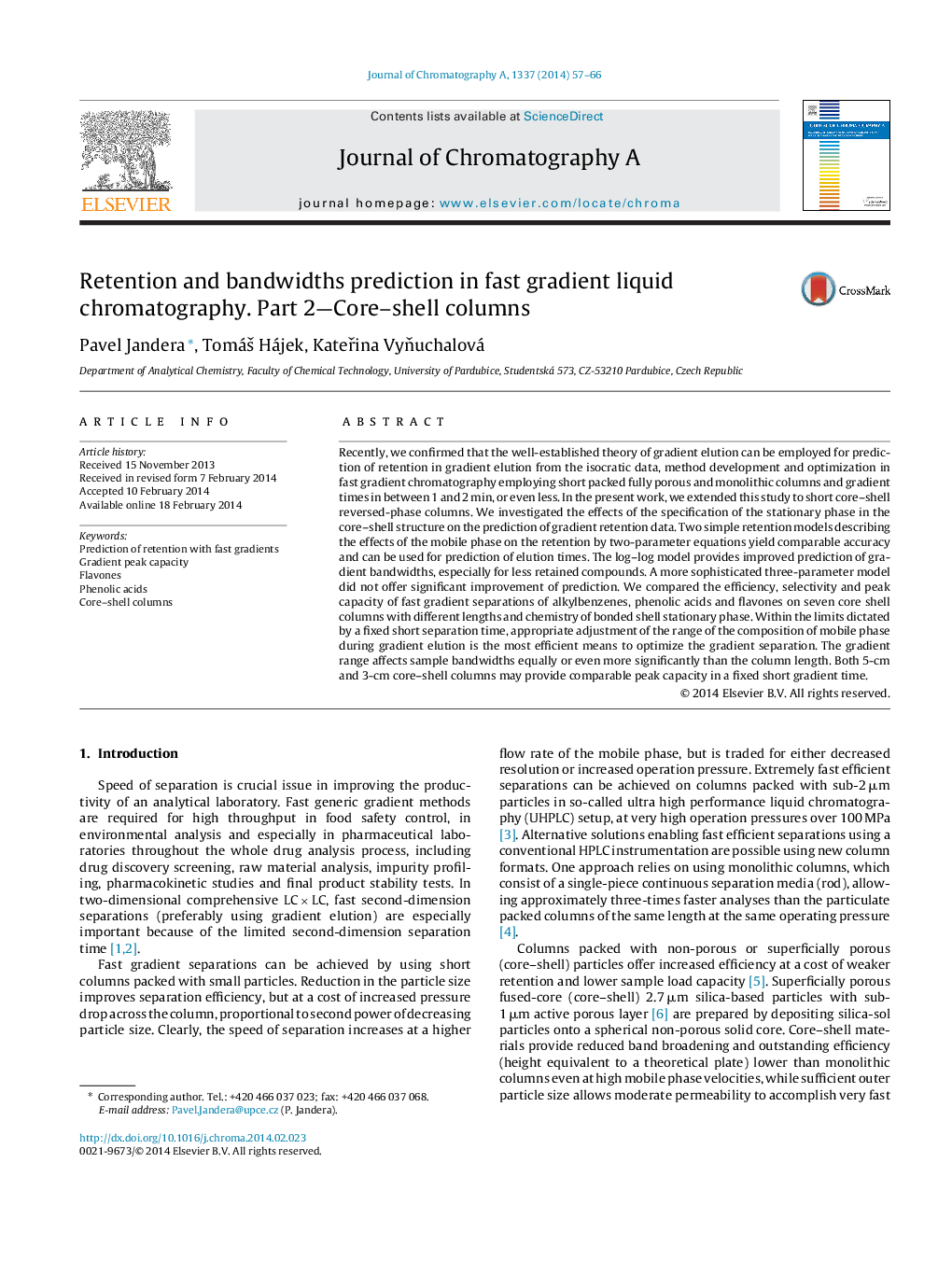| Article ID | Journal | Published Year | Pages | File Type |
|---|---|---|---|---|
| 7613516 | Journal of Chromatography A | 2014 | 10 Pages |
Abstract
Recently, we confirmed that the well-established theory of gradient elution can be employed for prediction of retention in gradient elution from the isocratic data, method development and optimization in fast gradient chromatography employing short packed fully porous and monolithic columns and gradient times in between 1 and 2Â min, or even less. In the present work, we extended this study to short core-shell reversed-phase columns. We investigated the effects of the specification of the stationary phase in the core-shell structure on the prediction of gradient retention data. Two simple retention models describing the effects of the mobile phase on the retention by two-parameter equations yield comparable accuracy and can be used for prediction of elution times. The log-log model provides improved prediction of gradient bandwidths, especially for less retained compounds. A more sophisticated three-parameter model did not offer significant improvement of prediction. We compared the efficiency, selectivity and peak capacity of fast gradient separations of alkylbenzenes, phenolic acids and flavones on seven core shell columns with different lengths and chemistry of bonded shell stationary phase. Within the limits dictated by a fixed short separation time, appropriate adjustment of the range of the composition of mobile phase during gradient elution is the most efficient means to optimize the gradient separation. The gradient range affects sample bandwidths equally or even more significantly than the column length. Both 5-cm and 3-cm core-shell columns may provide comparable peak capacity in a fixed short gradient time.
Keywords
Related Topics
Physical Sciences and Engineering
Chemistry
Analytical Chemistry
Authors
Pavel Jandera, TomáÅ¡ Hájek, KateÅina VyÅuchalová,
